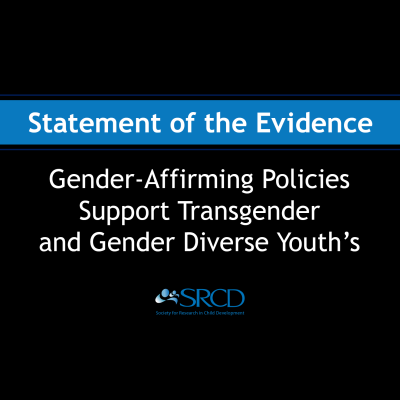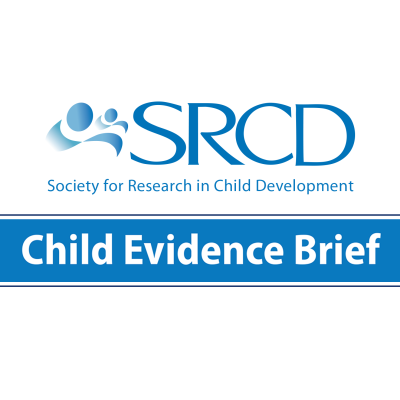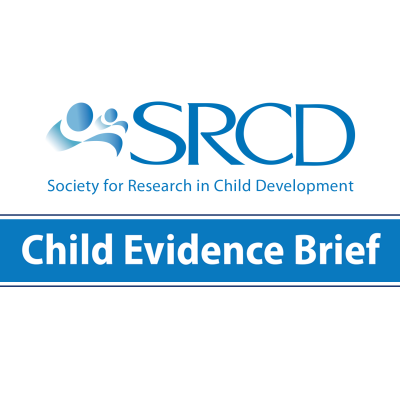Addressing Inequities in Education: Considerations for Asian American Children and Youth in the Era of COVID-19
Edited by Tiffany Yip, Ph.D., Fordham University. For more information, contact Kelly R. Fisher, Ph.D., Director for Policy, or Nighisti Dawit, M.Sc., Senior Policy Associate, Society for Research in Child Development, at policy@srcd.org.
Authors
- Tomoko Wakabayashi, Ed.D., Oakland University
- Charissa S. L. Cheah, Ph.D., University of Maryland, Baltimore County
- Tzu-Fen Chang, Ph.D., California State University, Bakersfield
- Gabrielle Lai, M.A. National Institute of Education, Singapore
- Kaveri Subrahmanyam, Ph.D., California State University, Los Angeles
- Nandita Chaudhary, Ph.D.
- Sunah Hyun, Ph.D., Brigham and Women’s Hospital, Harvard Medical School
- Puja Patel, M.Sc., University of North Carolina at Greensboro
The COVID-19 pandemic has led to a global surge in harassment and hate crimes against individuals of Asian descent, including Asian Americans.1 Misdirected blame and fear of COVID-19 is xenophobic, and simulates historical and systemic racism that frames Asian Americans as “perpetual foreigners.” Racial discrimination negatively impacts academic well-being and mental health; yet Anti-Asian sentiments and microaggressions are often overlooked due to the model minority myth (MMM). Asian Americans are a highly diverse group; the MMM can mask significant differences in students’ risks and needs. As schools prepare to reopen, policymakers and school administrators should craft their messages to avoid furthering anti-Asian sentiments that filter down to schools and communities. Misinformation is shared virtually across communities regardless of their Asian American composition. School/community leaders must proactively address COVID-19-related social stigma and discrimination, take steps to ensure Asian American children’s psychological and physical safety, and address social-emotional and academic needs.
The COVID-19 pandemic was first documented in Wuhan, China in late 2019. As the virus quickly spread, people of Asian descent, regardless of their ties to China, became targets of global blame.2 In the United States, both in-person and online forms of xenophobia increased as anti-Chinese social media posts, media coverage, policies, and comments from public leaders exacerbated violence against Asian Americans,3 and Islamophobic conspiracy-theories. Blaming the COVID-19 pandemic on Asian Americans4 simulates historical racism in the United States. The Chinese Exclusion Act of 1882, Japanese internment during World War II, and post-9/11 discrimination against South Asians5 have framed Asian Americans as “perpetual foreigners.”
STOP AAPI HATE has received over 1,800 anti-Asian incident reports related to COVID-19.6 Over 60% of Asian Americans witnessed someone blaming Asian people,7 and over 80% of 10- to 18-year-old Chinese Americans experienced or witnessed COVID-19-related discrimination in person or online.8 Increasing Islamophobia has also been reported.9 Asian American students are vulnerable to increased psychological distress, lower academic achievement, and lower engagement when exposed to racial discrimination.8,10 Just hearing about or witnessing hate incidents, including through social media, can exacerbate distress8,11 leading to poor academic performance and truancy.12
Another problematic image of Asian Americans is that of “model minorities,” which emerged in the 1960s as a way to dismiss the existence of systemic racism13 by portraying Asian Americans as academically and economically successful. However, Asian Americans have highly diverse heritages, religions, and immigration and socio-economic backgrounds. Their double status as “perpetual foreigners” and “model minorities” creates conflicts in identity and belonging, and< divisions across races.14
The Model Minority Myth Masks Challenges with At-Home Learning
The model minority myth (MMM) masks disparities among Asian Americans.15 Asian Americans have the highest median income, but also the largest income gap.16 Asian Americans exceed their share of the population in 72% of high-contact essential medical-related occupations and personal-appearance workers (e.g., cosmetologists) during COVID-19,17 creating challenges to meeting childcare and at-home learning needs. Partially due to the surge in Asian immigration after race-based quotas were lifted in 1965, over 59% of Asian Americans are foreign-born18 and may face immigration-related challenges (e.g., low wages, food insecurity, hazardous working conditions). Low-income families may have difficulty accessing technologies such as the internet19 and computers,20 which are needed for at-home learning.
Asian Americans are the least likely racial/ethnic group to report speaking English at home or speaking it well.21 Asian American children whose parents have limited English skills may struggle with at-home learning.22 Nevertheless, Asian Americans are unlikely to seek or receive academic help due to the MMM.23
Asian Americans Face Barriers to Seeking Mental Health Support
More than 5,000 Asian Americans have lost their lives,24 and among all racial groups, Asian Americans experienced the largest percentage increase (450%) in unemployment rates from February to June 2020.17 The anti-Asian stigma on top of these losses and disruptions to peer relationships, family routines, and kinship support caused by shelter-in-place regulations can exacerbate mental health problems including PTSD, depression, and anxiety.25
Whether direct or vicarious, in person or online, racial discrimination and perceptions of Sinophobia due to COVID-19 were associated with poorer psychological wellbeing and increased internalizing problems, anxiety, and externalizing problems in Chinese American families.8 Over 65% of Chinese American children/adolescents and over 78% of parents reported being worried that they will suffer because of China being blamed for COVID-19.8 Race-based prejudices can be acquired in schools,26 and such racial discrimination and harassment can negatively impact mental health.27 Asian Americans, however, are less likely than non-Hispanic White Americans to seek help28 due in part to perceived stigma, language barriers, and lack of ethnic match with mental health providers.29
Policy and Practice Implications
Policymakers should craft their messages to avoid further anti- Asian sentiments that filter down to schools and communities. Schools and community leaders must proactively address COVID-19-related social stigma and discrimination against Asian American children30 by:
- Providing scientifically-validated information on COVID-19-spread and implementing policies to correct misinformation among school personnel and students, including the misconception that Asian Americans are carriers of, and should be blamed for, COVID-19.
- Mandating that teachers/staff take diversity, equity, and inclusion training, including bias reduction and bystander training that addresses issues specific to Asian Americans, since anti-Asian sentiments and microaggressions are often overlooked due to the MMM.15
- Including accurate coverage of Asian American history in school curriculum.
- Updating anti-harassment and anti-discrimination policies to include clear reporting guidelines and constructive follow-through, such as restorative justice.31
- Engaging families and community members prior to reopening schools and strengthening school-community efforts to identify and prevent anti-Asian sentiments from spreading in person and online.
- Ensuring that teachers/staff proactively assess Asian American students’ and families’ technology access and support, English language support, and socio-emotional needs via regular online or phone check-ins, as they may be reluctant to seek help.
- Disseminating COVID-19-related information and resources in the languages spoken across their communities, ensuring that interpretations and/or translations of school-home communications and English language support and tutoring are readily available.
- Connecting teachers/staff and families with school-based mental health programs and community healthcare providers to facilitate culturally-relevant, integrated mental and behavioral health services that provide resources to normalize help-seeking behaviors and support Asian American children’s mental health.32
This brief is part of a larger volume that addresses the impact of systemic racism and the potential exacerbating effects of COVID-19 on racial-ethnic minority children, youth, and families, and LGBTQ+ youth. The full volume includes the following briefs:
- Considerations for American Indian and Alaska Native Children and Youth in the Era of COVID-19
- Considerations for Asian American Children and Youth in the Era of COVID-19
- Considerations for Black Children and Youth in the Era of COVID-19
- Considerations for Latinx Children and Youth in the Era of COVID-19
- Considerations for LGBTQ+ Children and Youth in the Era of COVID-19
Endnotes / References
(1) In this brief, we use “Asian American” to refer to individuals of Asian descent living in the United States.
(2) World Health Organization. (2020, April 21). Addressing human rights as key to the COVID-19 response. https://www.who.int/publications-detail/addressing-human-rights-as-key-to-the-covid-19-response
(3) Schild, L., Ling, C., Blackburn, J., Stringhini, G., Zhang, Y. and Zannettou, S. (2020, April 8). “Go eat a bat, Chang!”: An early look on the emergence of sinophobic behavior on web communities in the face of COVID-19. https://arxiv.org/abs/2004.04046
(4) U.S. Commission on Civil Rights. (2020, March 20). The U.S. Commission on Civil Rights expresses concern over growing anti-Asian racism and xenophobia amid the COVID-19 outbreak. https://www.usccr.gov/press/2020/03-20-Racism-and-Coronavirus-Stmt.pdf
(4) U.S. Commission on Civil Rights. (2020, May 8). The U.S. Commission on Civil Rights unanimously issues recommendations to secure nondiscrimination in the COVID-19 pandemic context, and specifically to address anti-Asian racism and xenophobia. https://www.usccr.gov/press/2020/05-08-Anti-Asian-Discrimination.pdf
(5) U.S. Department of Justice. (n.d.). Combating Post-9/11 Discriminatory Backlash. Retrieved May 31, 2020, from https://www.justice.gov/crt/combating-post-911-discriminatory-backlash-6
(6) Borja, M., Jeung, R., Horse, A. Y., Gibson, J., Gowing, S., Lin, N., Navins, A., & Power, E. (2020, June 17). Anti-Chinese rhetoric tied to racism against Asian Americans Stop AAPI Hate Report. Asian Pacific Policy and Planning Council. http://www.asianpacificpolicyandplanningcouncil.org/wp-content/uploads/Anti-China_Rhetoric_Report_6_17_20.pdf
(7) Ellerbeck, A. (2020, April 28). Over 30 percent of Americans have witnessed COVID-19 bias against Asians, poll says. NBC News. https://www.nbcnews.com/news/asian-america/over-30-americans-have-witnessed-covid-19-bias-against-asians-n1193901
(8) Cheah, C. S. L., Wang, C., Ren, H., Zong, X., Cho, H. S., & Xue, X. (2020). COVID-19 racism and mental health in Chinese American Families. Pediatrics. https://doi.org/10.1542/peds.2020-021816
(9) Kayaoglu, T. (2020, June 17). Pandemic politics: A public health crisis and a hate crisis: COVID-19 and Islamophobia. Brookings Institution. https://www.brookings.edu/opinions/pandemic-politics-a-public-health-crisis-and-a-hate-crisis-covid-19-and-islamophobia/
(10) Benner, A. D., Wang, Y., Shen, Y., Boyle, A. E., Polk, R., & Cheng, Y. P. (2018). Racial/ethnic discrimination and well-being during adolescence: A meta-analytic review. American Psychologist, 73(7), 855–883. https://doi.org/10.1037/amp0000204
(11) Huynh, V. W., Huynh, Q.-L., & Stein M.-P. (2017). Not just sticks and stones: Indirect ethnic discrimination leads to greater physiological reactivity. Cultural Diversity and Ethnic Minority Psychology, 23(3), 425-434. https://doi.org/10.1037/cdp0000138
(12) Yang, K.-E., & Ham, S.-H. (2017). Truancy as systemic discrimination: Anti-discrimination legislation and its effect on school attendance among immigrant children. The Social Science Journal, 54(2), 216-226. https://doi.org/10.1016/j.soscij.2017.02.001
(13) Chou, R. S., & Feagin, J. R. (2015). Myth of the model minority: Asian Americans facing racism (2nd ed.). Routledge/Taylor & Francis Group. https://doi.org/10.4324/9781315636313
(14) Tewari, N., & Alvarez, A. N. (Eds.). (2009). Asian American psychology: Current perspectives. Routledge/Taylor & Francis Group. https://doi.org/10.4324/9780203809839
(15) Shih, K. Y., Chang, T.-F., & Chen, S.-Y. (2019). Impacts of the model minority myth on Asian American individuals and families: Social justice and critical race feminist perspectives. Journal of Family Theory & Review, 11(3), 412-428. https://doi.org/10.1111/jftr.12342
(16) Kochhar, R., & Cilluffo, A. (2018, July 12). Income inequality in the U.S. is rising most rapidly among Asians. Pew Research Center. https://www.pewsocialtrends.org/2018/07/12/income-inequality-in-the-u-s-is-rising-most-rapidly-among-asians/
(17) Dang, E., Huang, S., Kwok, A., Lung, H., Park, M., & Yueh, E. (2020, August 6). COVID-19 and advancing Asian Americans. McKinsey & Company. https://www.mckinsey.com/industries/public-and-social-sector/our-insights/covid-19-and-advancing-asian-american-recovery
(18) López, G., Ruiz, N. G., & Patten, E. (2017, September 8). Key facts about Asian Americans, a diverse and growing population. Pew Research Center. https://www.pewresearch.org/fact-tank/2017/09/08/key-facts-about-asian-americans/
(19) Van Lancker, W., & Parolin, Z. (2020). COVID-19, school closures, and child poverty: A social crisis in the making. The Lancet Public Health, 5(5), e243-e244. https://doi.org/10.1016/S2468-2667(20)30084-0
(20) Zhang, H., Washington, R., & Yin, J. (2014). Improving strategies for low-income family children’s information literacy. Universal Journal of Educational Research, 2(9), 655-658. https://doi.org/10.13189/ujer.2014.020908
(21) Budiman, A. (2020, May 7). Asian Americans are fastest-growing racial or ethnic group in the U.S. electorate. Pew Research Center. https://www.pewresearch.org/fact-tank/2020/05/07/asian-americans-are-the-fastest-growing-racial-or-ethnic-group-in-the-u-s-electorate/
(22) Duong, M. T., Badaly, D., Liu, F. F., Schwartz, D., & McCarty, C. A. (2016). Generational differences in academic achievement among immigrant youths: A meta-analytic review. Review of Educational Research, 86(1), 3-41. https://doi.org/10.3102/0034654315577680
(23) Hong, J. S. (2010). Understanding Vietnamese youth gangs in America: An ecological systems analysis. Aggression and Violent Behavior, 15(4), 253-260. https://doi.org/10.1016/j.avb.2010.01.003
(23) Kim, P. Y., & Lee, D. (2014). Internalized model minority myth, Asian values, and help-seeking attitudes among Asian American students. Cultural Diversity and Ethnic Minority Psychology, 20(1), 98–106. https://doi.org/10.1037/a0033351
(24) Centers for Disease Control and Prevention. (2020a). Provisional death counts for Coronavirus disease 2019 (COVID-19): Weekly updates by select demographic and geographic characteristics. https://www.cdc.gov/nchs/nvss/vsrr/covid_weekly/index.htm#Race_Hispanic
(25) Dyregrov, A., Salloum, A., Kristensen, P., & Dyregrov, K. (2015). Grief and traumatic grief in children in the context of mass trauma. Current psychiatry reports, 17(6), 48. https://doi.org/10.1007/s11920-015-0577-x
(26) Donovan, B. M. (2016). Learned inequality: Racial labels in the biology curriculum can affect the development of racial prejudice. Journal of Research in Science Teaching, 54(3), 379–411. https://doi.org/10.1002/tea.21370
(27) Lee, D. L., & Ahn, S. (2011). Racial discrimination and Asian mental health: A meta-analysis. The Counseling Psychologist, 39(3), 463-489. https://doi.org/10.1177/0011000010381791
(28) Okamura, K. H., Ebesutani, C., Bloom, R., Higa-McMillan, C. K., Nakamura, B. J., & Chorpita, B. F. (2016). Differences in internalizing symptoms across specific ethnic minority groups: An analysis across Chinese American, Filipino American, Japanese American, Native Hawaiian, and White youth. Journal of Child and Family Studies, 25(11), 3353–3366. https://doi.org/10.1007/s10826-016-0488-4
(29) Spencer, M. S., Chen, J., Gee, G. C., Fabian, C. G., Takeuchi, D. T. (2010). Discrimination and mental health-related service use in a national study of Asian Americans. American Journal of Public Health, 100(12), 2410-2417. https://doi.org/10.2105/AJPH.2009.176321
(30) Centers for Disease Control and Prevention. (2020b). Operating schools during COVID-19: CDC's Considerations. https://www.cdc.gov/coronavirus/2019-ncov/community/schools-childcare/schools.html
(31) Zehr, H., & Gohar, A. (2003). The little book of restorative justice. Good Books. https://www.unicef.org/tdad/littlebookrjpakaf.pdf
(32) Sanchez, A. L., Cornacchio, D., Poznanski, B., Golik, A. M., Chou, T., & Comer, J. S. (2017). The effectiveness of school-based mental health services for elementary-aged children: A meta-analysis. Journal of the American Academy of Child & Adolescent Psychiatry, 57(3), 153–165. https://doi.org/10.1016/j.jaac.2017.11.022


